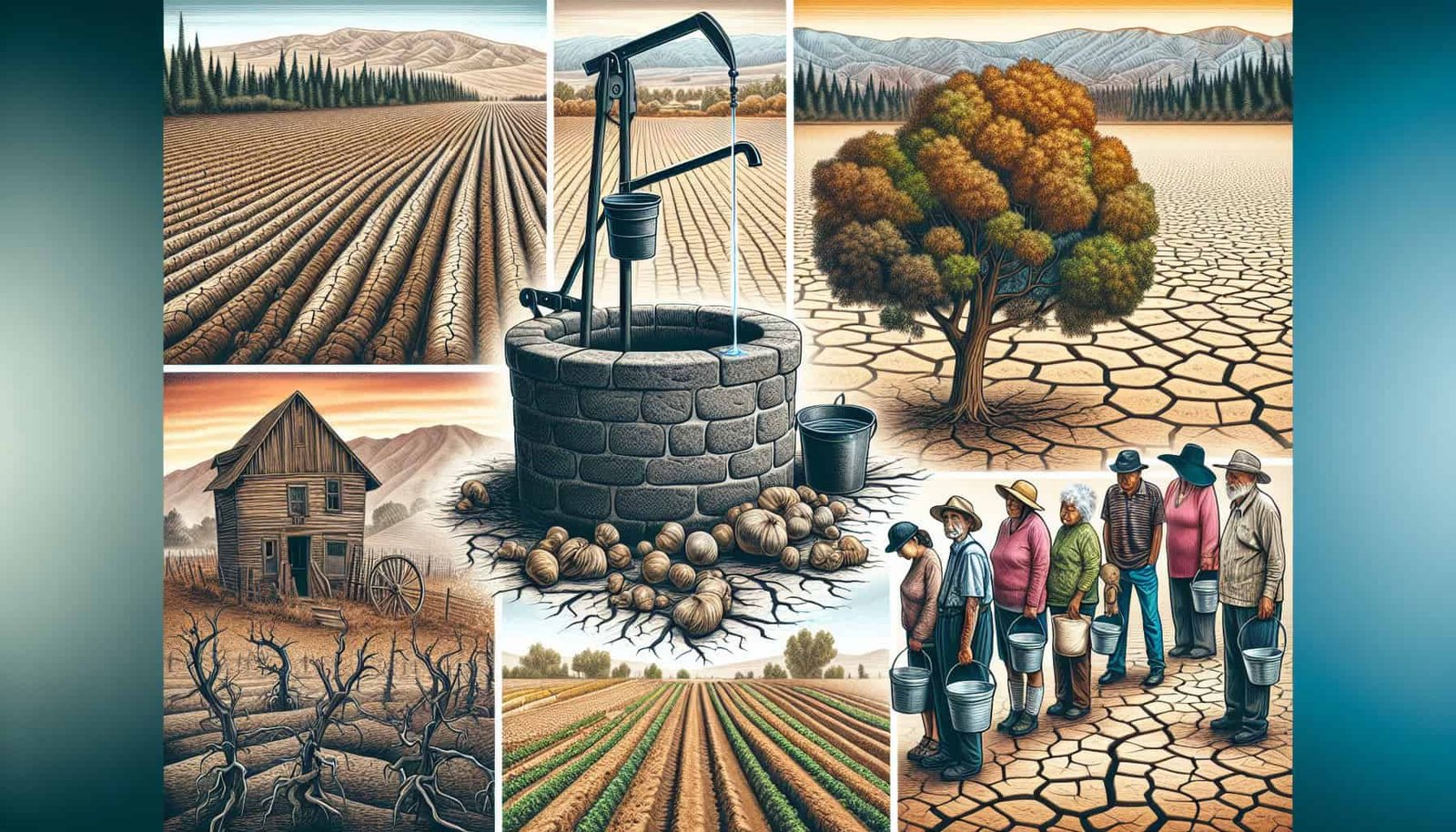In the heart of California’s Central Valley, a looming crisis threatens the access to clean water for thousands of residents. Over the years, water wells in the region have been steadily drying up, putting the vital resource at risk. Recent studies have shown that an alarming number of these wells are at risk of failure, leaving residents without a reliable source of drinking water. With the effects of climate change exacerbating the already dry conditions, it is crucial to address this issue and find sustainable solutions to ensure the well-being of the affected communities.
Title: Thousands of Central Valley water wells risk failure
Introduction
In California’s Central Valley, a concerning issue looms over the region’s water supply. Thousands of water wells in the area are at risk of failure, leading to a potential crisis for both drinking water availability and the environment. This article will delve into the background information surrounding the Central Valley, the importance of water wells, the factors contributing to their failure, and the resulting impact on drinking water quality, environmental consequences, and economic implications.

Background Information
The Central Valley in California is a vital agricultural region known for its rich soil and abundant crop production. Spanning over 400 miles, it is home to numerous farms, ranches, and communities that rely heavily on water resources. The valley’s water supply largely depends on groundwater pumped from wells, making these wells crucial for sustaining both agricultural and residential needs.
1. Overview of Central Valley
The Central Valley is located in the heart of California and encompasses approximately 22,500 square miles. It stretches from the Cascade Mountains in the north to the Tehachapi Mountains in the south. The valley is divided into two main sections: the Sacramento Valley to the north and the San Joaquin Valley to the south. With its fertile soil and Mediterranean climate, the region has become a major agricultural powerhouse and is known as the “breadbasket of the world.”

2. Importance of Water Wells
Water wells play a vital role in the Central Valley’s water supply. Farmers rely on these wells to irrigate their crops and sustain their livelihoods. Additionally, residential communities in the area rely on well water for drinking, cooking, and other daily needs. Without functioning water wells, the region’s agricultural productivity and residents’ access to clean drinking water would be severely compromised.
3. Factors Contributing to Well Failure
There are several factors contributing to the increasing risk of well failure in the Central Valley. One key factor is the overpumping of groundwater. With high demand for water in both agricultural and residential sectors, excessive pumping has caused groundwater levels to decline rapidly, leading to the formation of subsidence zones. These subsidence zones can cause well casings to crack or collapse, rendering the wells ineffective.
Additionally, the prolonged drought conditions in California have further exacerbated the problem. As surface water supplies dwindle, farmers and residents turn to groundwater sources, putting even greater stress on the already overburdened wells. The combination of overpumping and drought has created a perfect storm that threatens the viability of thousands of water wells in the Central Valley.

4. Impact on Drinking Water
The potential failure of thousands of water wells poses significant risks to the quality and availability of drinking water in the Central Valley. When wells fail, contaminants from surrounding sources can infiltrate the groundwater, making it unsafe for consumption. Furthermore, the reduced availability of water wells would force communities to find alternative sources of drinking water, which may be costly and logistically challenging.
Without access to clean and reliable drinking water, the health and well-being of residents in the Central Valley would be severely impacted. Contaminated water can lead to a host of health issues, including gastrointestinal problems, skin irritations, and even long-term health complications. It is imperative to address the risks associated with well failures to ensure the region’s residents have access to safe drinking water.
5. Environmental Consequences
The failure of water wells in the Central Valley would have profound environmental consequences. With limited access to groundwater, farmers would have to rely more heavily on surface water sources, such as rivers and reservoirs. Increased reliance on surface water can lead to ecological imbalances, as these water bodies are already under pressure from various users and face their own challenges, such as pollution and habitat degradation.
Furthermore, the decline of water wells would also impact the region’s ecosystems. Wetlands and riparian areas that rely on groundwater could dry up, leading to the loss of critical habitats for both plant and animal species. The disruption of the natural water balance could have far-reaching implications for biodiversity and ecosystem health in the Central Valley.

6. Economic Implications
The potential failure of thousands of water wells in the Central Valley would have significant economic implications. Agriculture is a major economic driver in the region, and without reliable access to water for irrigation, crop yields would decline and farmers would suffer financial losses. The ripple effects would extend to other sectors of the economy that rely on the agricultural industry, such as food processing, distribution, and employment.
Moreover, the costs associated with finding alternative sources of drinking water, such as constructing new wells or implementing water treatment systems, would place a burden on communities and local governments. The economic strain caused by the failure of water wells would be felt across the region, further exacerbating the challenges faced by the Central Valley.
Conclusion
The risk of thousands of water wells failing in California’s Central Valley is a pressing issue that must be addressed urgently. The importance of water wells cannot be understated, as they are vital for both agricultural productivity and access to clean drinking water. Factors such as overpumping and drought have contributed to the increasing risk of well failure, posing threats to the quality of drinking water, the environment, and the region’s economy.
To mitigate this crisis, it is crucial for stakeholders to adopt sustainable water management practices, including the implementation of stricter regulations on groundwater pumping and the development of alternative water sources. By prioritizing the preservation and maintenance of water wells, we can work towards ensuring a secure and resilient water supply for the Central Valley and safeguarding the well-being of its residents and the environment for generations to come.


